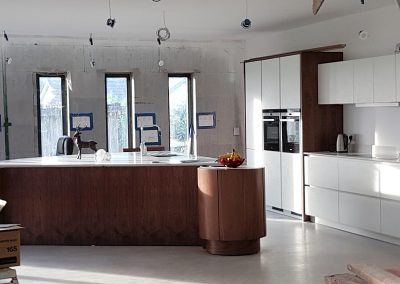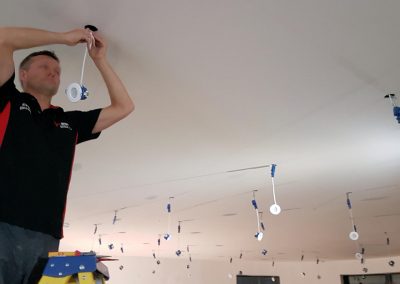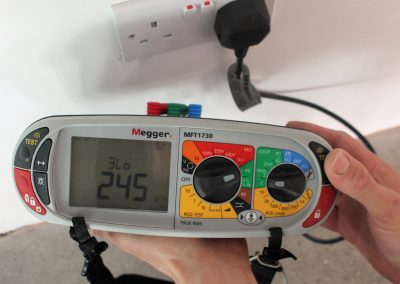New Builds & Extensions
All work is carried out to BS7671 standards with building control notifications as required by Part P of the building regulations. BS7671 is the British Standard for Electrical Installation & incorporates the IEE wiring regulations.
To arrange a new electricity connection for a new build home or for a temporary supply while you build, you need to contact a ‘Distribution Network Operator’ (DNO) for the connection and an ‘energy supplier’ to arrange a meter.
With a new build it is important to draw up an electrical plan and lighting design to illustrate where sockets, switches, lights, UFH manifolds, etc. will go and cross reference these details with other trades on site.
Positioning of these items are crucial and should adhere to building regulations Part P. For example; socket heights should be no lower than 450mm and light switches should be no higher than 1200mm. Also, a socket should not be less than 300mm away from the sink and a minimum of 150mm away from the worktop. There are two stages in a new build, these are known as the first fix and second fix. First fix involves running the wires through the fabric of the building, it is all about the preparation. During this phase an electrician will install a temporary consumer unit so you can have power on site.
This work is all carried out behind the scenes, running the wiring and fitting the back boxes in place. The second fix occurs after the plastering is complete. This is when the wiring is connected to visible outlets. For example, sockets, light switches and security systems. The electrician will also install the permanent consumer unit and test the system. On completion, tests and verification will be done of the system and a certificate will be filled out and processed through the competent person’s scheme.




